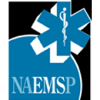By Jon C. Rittenberger
In 2015, the Institute of Medicine released its landmark report, “Strategies to Improve Cardiac Arrest Survival: A Time to Act”. This report will influence the care of the more than 300,000 people who suffer cardiac arrest each year. It will also affect the EMS community, as we are the critical first point of medical contact for these critically ill patients.
The IOM’s first recommendation is to establish a national cardiac arrest registry. As EMS providers, we are the first to resuscitate out-of-hospital cardiac arrest patients. Our patient data is integral to the development of such a registry. If wisely implemented, such a recommendation can have powerful benefits for our patients and the community. However, there are potential pitfalls that should be considered as we move forward.
Potential benefits of a cardiac arrest registry
Have you ever wondered what happened to the cardiac arrest patient you brought to the ED? After a 45-minute resuscitation and transport, we naturally feel engaged in the patient’s care and want to see the result of our labor.
Granted, there is no shortage of negative feedback when things go wrong, but hearing about a good outcome is a rare event in many EMS systems. We see many patients who cannot be resuscitated from cardiac arrest, leading to a belief that resuscitation is a pre-terminal event.
Not hearing about the good outcome reinforces a nihilistic approach to this patient population. A holy grail for many systems is linking the prehospital to in-hospital data. Aside from providing individual feedback on outcomes, it would also permit determination of benchmarks for outcomes. High-performing systems, both EMS and hospital, can share their lessons learned with others. If the database is bundled with feedback and recommendations on how to improve the entire system, it becomes a powerful tool to make ROSC patient transport decisions, improve patient care and outcomes.
A national cardiac arrest registry will also facilitate large natural experiments through quality improvement efforts. For example, if a large region implements several strategies in tandem it is easier to document their effect. This was done in Arizona, where a system of care for cardiac arrest patients that included bystanders, EMS providers and hospital providers was implemented with improvements in patient survival. Pragmatic work evaluating differing strategies to improve chest compression fraction, ventilation, or post-arrest care could be implemented simultaneously in multiple geographic regions rather than a single intervention that is standard for a randomized controlled trial.
Registry cost
For hospitals and EMS agencies, participation in a cardiac arrest registry requires time and effort. While part of the burden is directly correlated with the number of out-of-hospital cardiac arrest patients your EMS agency cares for, a great deal of the work is related to the variables being requested. A short form requesting age, gender, primary rhythm of arrest, use of medications, presence of pulses at ED arrival may be completed quickly.
More robust data collection efforts may involve determination of chest compression fraction, EKG analyses, and ventilatory strategies, similar to those reported in the Resuscitation Outcomes Consortium trials. While this may be an eventual goal, this is an unrealistic expectation for many EMS systems.
The IOM report provides vision, but lacks funding to realize the vision. Thus, the potential for an unfunded mandate is of real concern. EMS can collaborate with other stakeholders including the CDC, state and local health departments.
Existing databases, including the Cardiac Arrest Registry to Enhance Survival, Get with the Guidelines, and the Heart Rescue Project represent three large efforts to realize this goal. To date, only the CARES database provides feedback and improvement data to providers. It is used in 36 states, covering approximately 85 million people.
Potential registry pitfalls
Any database that does not offer feedback and the ability to improve an EMS system will result in added work. Over time, participation in the registry will shift to a tertiary or quaternary goal for the organization. Database managers are aware of this threat to data fidelity and should collaborate with care providers to develop a database that can be rapidly and accurately completed. The goal is to ensure a win-win situation providing value to the EMS agency, receiving hospitals and system at large.
The IOM report will impact EMS providers and agencies. Their recommendation to develop a national database provides the promise of standardizing care, benchmarking and sharing best practices. Without input from EMS providers, however, it could develop into a burdensome requirement without benefit. Keeping these concerns in mind will ensure an optimal balance when working with partner organizations. Remaining engaged in the process is required to ensure the unique needs of the EMS community are addressed throughout the life cycle of this database.
About the author
Jon C. Rittenberger, M.D., MS, EMT, is an associate professor of emergency medicine at the University of Pittsburgh. His clinical research focuses on acute neuronal injury. As one of the founding members of the Post Cardiac Arrest Service, Dr. Rittenberger focuses on anoxic brain injury and treatments to ameliorate this injury and improve functional recovery. He serves on the Board of Directors of the National Association of EMS Physicians.












